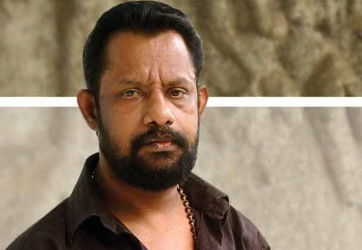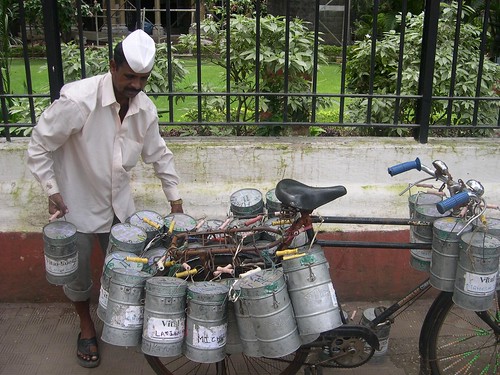
Maphriyono Mar Baselios Yeldo was born at Karakosh near Mosul in Iraq, where Marthsmooni and her 7 children suffered Martyrdom. He became a monk in Mar Bahnan monastery in Mosul. The saint came to India via Basra to Surat, after consecration as Maphrian (Catholicos / Maphriyono) by the Patriarch Mar Ignatius Abdul Messiah I, arriving at Thalassery in North Kerala, then by hill route to Kothamangalam in AD 1685 at the request of Marthoma II of Malankara Church. He reached Marthoma Cheriapalli with Mar Ivanios, guided by a Hindu gentleman whose descendants guide the procession of the festival held in his memory every year. The saint expired on October the second and is entombed in the sanctuary of MarThoman CheriaPally, Kothamangalam.
YELDHO MAR BASELIOS & HIS MISSION
Though St.Gregorios Abdul'Galeel Bava had succeeded in reorganizing the Syrian Christians and reaffirming them in the true faith of the Holy Church; it was very difficult to manage the church under the excessive pressures and influences of the Portuguese elements. Syrian Christians were slowly drifting from their ancestral precepts and ethos. So he sent a fervent appeal to his supreme head, His Holiness the Patriarch of Antioch, for the immediate assistance of a Metropolitan and also ‘Malpans’ (teachers of theology) with an aim to educate the faithful. A delegation was later deputed to the Patriarchate at Mardin (Turkey) with the same purpose. During the consecration of the ‘Holy Mooron’ (Holy Chrism) at the Kurkuma Dayro (Deir-al saffron) in 1684, Patriarch Moran Mar Ignatius Abdul Messiah I painfully discussed the matter with the Maphriyono Mar Baselios Yeldho and other prelates assembled there. ('Maphriyono' is another canonical title of the 'Catholicos of the East' that functions within the Patriarchate of Antioch).
On knowing the grave situation in Malankara, Maphriyono Mar Baselios Yeldho, who was above 90 years of age then, a native of Bakudaida (Kooded or koodeth) Karakosh, near Mosul, gladly volunteered for the service, relinquishing his administrative charge there. His self-sacrificing decision was praised by all. The Patriarch, concerned about the Maphriyono’s age and health, was worried at the decision, but finally His Holiness accepted the offer of Mar Baselios Bava and blessed him.
On returning to the Maphriyanate, at the Mar Mathai Dayro in Mosul (Iraq), the saint made preparations for the treacherous journey to India. He installed Metropolitan Mar Diascorous of Mosul who belonged to Kurd Island as Maphriyono (Catholicos) Mar Baselios Geevarghese II and started the long journey to a region, totally unknown to him. He was accompanied by his brother Jamma, the newly consecrated Episcopa Mar Ivanios Hidayatulla (son of Samma of Bakudaidand) and two Ramban's (monks) namely, Joea and Mathai of the monasteries of 'Mar Mathai' and 'Mar Behnan'. The group travelled down to south from Mosul and boarded ship at Basra in Iraq, thus commencing the first phase of the mission.
Mar Baselios Yeldho and his entourage reached Surat in Gujarat (North India) by the middle of 1685 and from there proceeded to the Malabar coast. Sometime later, they landed at Thalassery port in North Malabar. [As per the letter of MarThoma IV to the Patriarch dated 25th Elool (Sept) 1720, those who reached Malabar, were Mar Baselios Yeldho, Mar Ivanios, and 'Ramban Mathai' (there exists no further information about this Ramban)]. In order to avoid attacks from pirates along the seacoast and to escape from the Portuguese, they traversed due east to Tamil Nadu and proceeded down to southern Kerala on foot. The journey was in disguise through thick forests. After some weeks they reached a small village on the bank of a river at sunset. On the way they encountered a ferocious tiger. Mar Yeldho’s escorts were scared to death but the Saint calmly took out the 'Sleeba' (Cross) and made the sign of the cross in the direction of the animal which ran away roaring into the forests as if struck by a heavy object.
Later they reached the place which is now known as 'Pallivasal' near Munnar. There were many huts in the foothills for the travelers. Mar Yeldho had a feeling that it would be dangerous to stay in those inns since he expected heavy rains and floods that night. So Mar Yeldho advised his companions and the people remaining in the place that it would be better to sleep on the upper reaches of the surrounding hills. Some people who believed him moved higher up the hill but others dismissed the idea lightly and stayed on the inns. During the night there was a very heavy downpour and in the instantaneous flood many people and animals living on the river banks lost their lives. In the mourning the saint offered the Holy Qurbana (Eucharist), for the dead and the mercy shown on those with him, on a temporary altar made there. From that time the place assumed the name ‘PALLIVASAL’ (place of Holy church). The site where he offered the Holy Qurbana is said to be considered sacred by the tribes of the hills.
From there the Holy Father accompanied by the Episcopa Ivanios came to Kozhippilli village near Kothamangalam by afternoon. When they came to know that they had reached populated areas,Mar Yeldho decided that it was unwise for both to travel together any further. He therefore asked the Episcopa to climb a tree and hide himself while the Saint proceeded on foot for reconnaissance. When the holy father reached the banks of Kothamangalam river at Chakkalakudy he saw a Nair (Hindu) gentleman who was tending cattle there. Through symbols they communicated and the man told Mar Yeldho that there was a Church nearby.
Mar Yeldho asked him to accompany him to the church. The man expressed his inability to do so since he could not abandon the cattle. The Saintly Mar Yeldho took his walking stick and drew a big circle on the ground. Then he asked the man to take all the cattle into that circle. He waited for some more time to see how the cattle behaved and he found that they were not leaving the boundary of the circle. He realized that Mar Baselios Yeldho was a man of God. The man's sister was at that time in labor pains. He told the Mar Yeldho about the difficult situation. When the Saint asked for some water with a view to bless it, the man thought that he was asking for water to quench thirst, and he tried to climb a coconut tree nearby. The tree began to bend! The man took two tender coconuts from the tree and gave them to the Saint. The Saint blessed one of the tender coconuts and asked the man to rush home, and make his sister drink the juice. While Mar Yeldho waited at the same spot, after about one hour the man returned with the good news that his sister had given birth to a boy. Greater surprise was in store for him, since the cattle had not moved out of the circle. The man gladly accompanied the Saint to the church. While they got into the river to cross it, some children who were swimming in the river tried to throw pebbles at the Saint. Somehow instead of throwing pebbles they ended up following the Saint and his companion.
HOLY FATHER IN THE MARTHOMAN CHURCH
As the saint reached the church premises, the church bells began to toll. People living in the neighborhood rushed to the church to find out what the commotion was about. And that was on 'Kanni 11th' in the Malayalam calendar (end of September), AD 1685. The Saint entered the church and sat on the steps of the 'Madbaha'. There was a young deacon who was fluent in Syriac. When he realized that an Episcopa had stayed behind at Kozhipally, he and some members of the congregation set out for the place. They took a kerchief from the Saint for identification. When the Episcopa saw the approaching crowd he was afraid. He thought that they had killed Mar Yeldho and were now about to get at him. He therefore refused to come down from the tree. The deacon however offered him the sign of peace and spoke Syriac. He then came down from the tree and went with the people to the church.
On Kanni 13, the church used to celebrate its foundation day. On the 12th evening the Vicar sought the Saint's permission to hoist the flag. The Saint replied that the festival of the Holy Cross should be celebrated on the 14th and not on the 13th. When it was explained to the Saint that what they were celebrating was not the festival of the Holy Cross but the anniversary of the founding of the parish, the Saint permitted them to go ahead but reminded them about the importance of the festival of the Holy Cross.
On the next day, on the feast of the Holy Cross, (Kanni 14 in the Malayalam calendar), Episcopa Hidayatulla Mar Ivanios was consecrated as Metropolitan after the Holy Qurbana by the saintly Mar Baselios Yeldho. (Mor Ivanios, who was consecrated by Mor Yeldho, carried on apostolic work for eight years. He passed away in 1693 and was buried at the MarThoman Church, Mulunthuruthy). Because of the tedious journey and the old age, by then Mar Yeldho was totally exhausted. Three days after he became seriously ill. On 30th September (Kanni 17) he received the last sacraments of anointment with oil and extreme unction. All the while he was lying inside the church. Two days after (on Kanni 19, probably October 2) on Saturday in the afternoon, the saintly father left his mortal self for his heavenly home at the age of 92. As he was sinking, the congregation assembled inside the church, and was offering prayers. The Saint told them that he was about to die and when his spirit leaves his body; there would be a sign on the Cross situated on the western side of the Church. And the huge granite Cross miraculously lit up at the time of the Saint's demise. The Holy Father's mortal remains were entombed on the next day (Kanni 20) in the western side of the Madbaha of the church. The two weeks of sojourn of the Maphriyono at Kothamangalam electrified the Syrian Christians all over Malankara and the mission undertaken by the saint was fulfilled to a large extent by his faithful associate, Metropolitan Mor Hidayatulla Ivanios.
ANNUAL FEASTS OF THE HOLY FATHER ('KANNI 20 PERUNNAL')
Dhukrono of the saint is celebrated in the MarThoman Church (CheriaPalli) at Kothamangalam with spiritual grandeur every year on October 2 and 3 and is popularly known as "Kanni 20 Perunnal". Groups of pilgrims, irrespective of caste and creed come to the church every day seeking his intercession. And multitudes of devotee’s participate in the feast. Moreover, on all Saturdays, Holy Qurbana on three altars is offered in the church with special prayers beseeching the saint’s intercession. Through the years, the MarThoman Church at Kothamangalam, where the Saint is entombed has become a symbol of communal harmony. In remembrance to the instance of guiding Mar Yeldho to this church by a Nair (Hindu) Youth, his successors are still given the privilege to hold the traditional lamp of the church and lead the 'Rassa' (Church procession) to the church on the festival day of the saint.
Many Children are baptized as ‘Yeldho’ and ‘Basil’, bearing the name of our saintly holy father, Mar Baselios Yeldho. Number of children baptized in the church where Mar Yeldho’s mortal remains are interred, on a single day, had even exceeded 50. Mass baptisms are very common in this Church, particularly on Saturdays, the day of demise of the Holy Father. The name 'Yeldho' (meaning, Birth of Christ), has became a very common among Syrian Christians, more particularly in Malankara.








.jpg)









